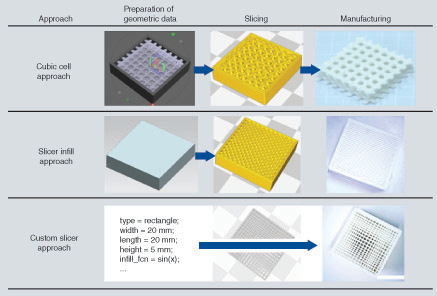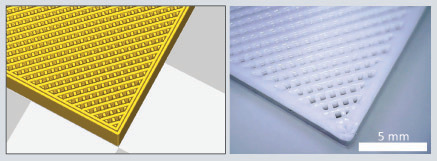Figures & data
Table 1. Parameter settings for comparison of the different slicers.
Table 2. Experimental plan of element dimension and spacing parameters.
The geometry output from Meshmixer is sliced in Cura and can be seen as a virtual print preview on the left. Printed strands are visualized as cylinders. An image of the printed sample is shown on the right. Some of the outer walls are removed for better view of inner structure. (A) Single sample, (B) fine sample, (C) medium sample and (D) coarse sample.




